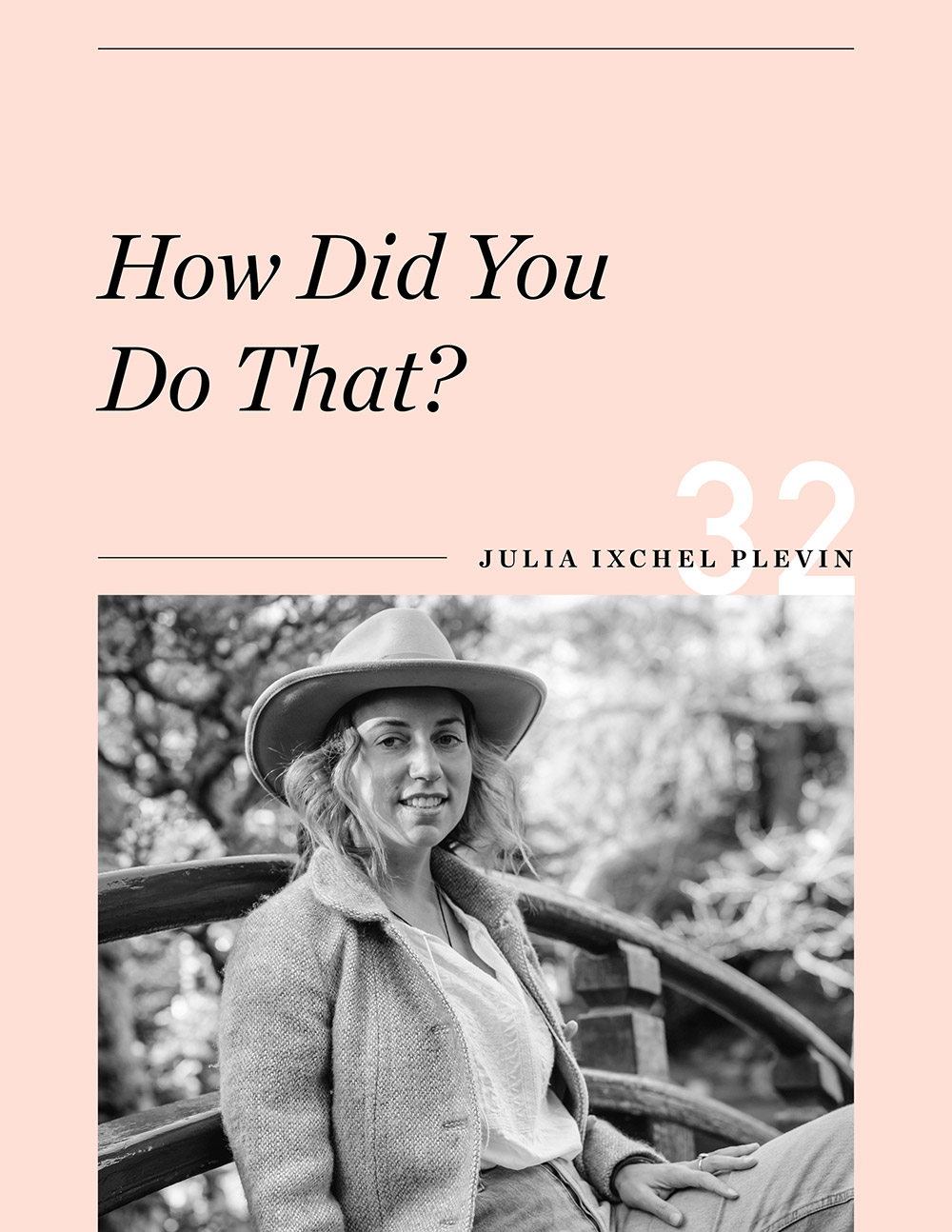
Whenever I meet someone who’s got a really cool job, who runs a thriving business, or who has completed an amazing project, I always want to know: “How did you do that?”
I’m always curious to hear the “behind-the-scenes story” — who they emailed, what they said, how they got their first client, how they got their foot in the door — the exact steps that they took to achieve their goal.
HOW DID YOU DO THAT? is an interview series where we get to hear the REAL story behind someone’s success—not the polished, neat and tidy version.
To see a complete list of all the interviews that have been completed to date, head over here.
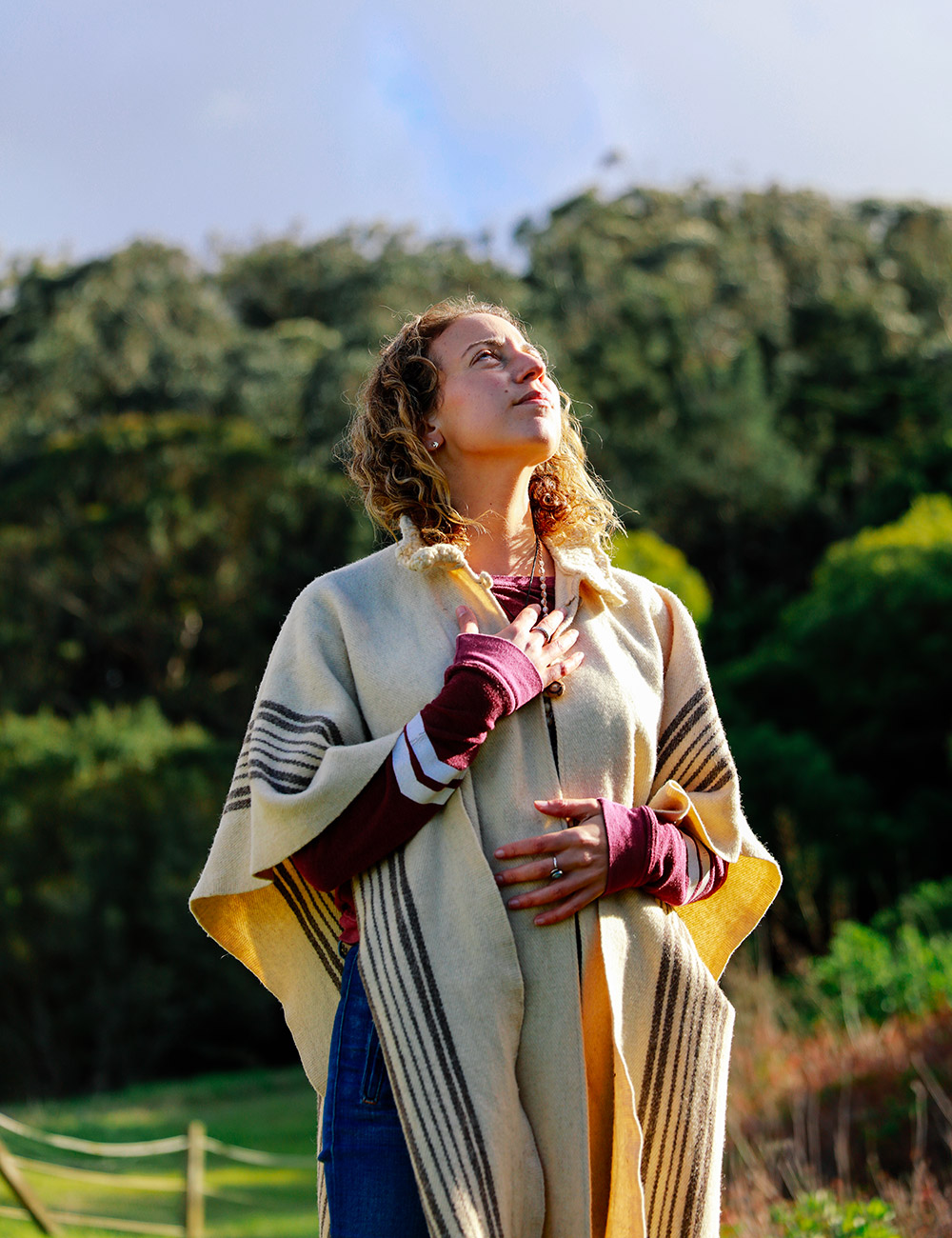
Name: Julia Ixchel Plevin
Founder: Forest Bathing Club
Author: “The Healing Magic of Forest Bathing”
You have such a fascinating career. Tell us, what you do?
I am an author, designer, and the founder of the Forest Bathing Club. My first book comes out in March and I’m currently working on writing another book and launching a nature connection accelerator and seed fund. There’s a lot of work to do right now for Team Earth!
(Note: You can pre-order Julia’s book here.)
Tell us a little about your background; how you came to do this work, and were you always interested in the outdoors? Was this sort of a surprise to you, or was this something that always brought you joy as you were growing up?
I grew up in Maryland, right outside DC, near Great Falls Park. I spent a lot of my childhood running and hiking on trails near the Potomac River. I always felt best in nature even though I didn’t know why. I was the President of my high school’s hiking club called the Hiking Vikings and chose to go to Dartmouth, mainly because of the outdoors club there. I used the Outside Magazine college rankings to decide where I wanted to go to college.
It wasn’t until I was living in New York during graduate school that I realized the mental health effects of being disconnected from nature. I was dealing with anxiety and depression and realized that it stemmed from a disconnection from nature. My thesis work was all about this disconnection and how to reconnect.
I studied history in college and I’ve always been a writer and a storyteller. I studied design in graduate school, which is all about creating the future. I really see this continuum of evolution from where we came from and where we’re going. What’s ironic is after immersing in the past and the future, I finally came to forest bathing which is all about being in the infinite present.
It took me a long time to really listen and surrender to life as opposed to how I thought I should be living. It’s a way of moving through the world that I was not taught in school or in my family, and I really had to discover it first on my own, and then as I deepened into this journey, I’ve met so many teachers, mentors, and peers who are also moving through life in this expansive way.
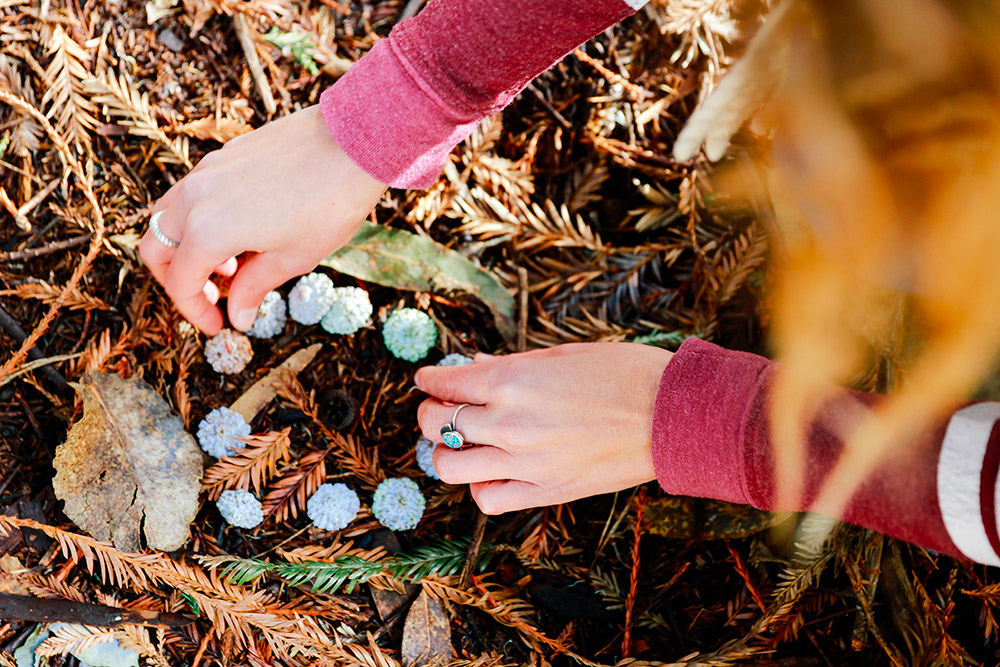
Forest Bathing is an ancient Japanese tradition in which the participant connects deeply with the natural world around them. Can you tell us more about it? Is the tradition still alive and well in Japan?
Well the term forest bathing comes from the Japanese word “shinrin yoku” which evokes bathing in the forest atmosphere. While there are ancient nature connection practices in Japan, this term was coined in 1982 when researchers were able to determine the scientific benefits of connecting to nature as a way to lower cortisol levels and boost NK (natural killer cells).
While the term itself is relatively recent and trendy, the practice is thousands of years old, and is universal. It harkens back to the Original Instructions for how to live on Earth. If you listen closely to the Earth, she will tell you how to live in a connected way. I have found similar practices in many different indigenous and ancient cultures.
So in its simplest form, it’s just about going out into nature, and being present with it.
To me, forest bathing is about going to nature with the intention to heal. Or with any intention, really, but it’s important to have a clear intention. And it’s about getting out of your own head, and dropping into your heart: quieting all that noise, awakening your senses, and being present to moment. It’s a continuous practice of being open to receiving whatever messages or wisdom nature wants to share with you.
You started a Forest Bathing Club in San Francisco. How many members do you have? What does a typical forest bathing club outing took like? Do you just go out into nature and let the forest do its work- or are there certain practices that take place?
We have over a thousand members around the world. A forest bath is a two-and-a-half hours transformational journey. It’s not a hike or a yoga class or a guided nature walk. I act as a guide and a facilitator: I hold space, and lead people through different invitations. I’m always working alongside Nature and she’s doing the real healing work. A forest bath always varying based on what the situation is calling for, and I’m always working with the elements.
It’s all about attuning to the moment. Sometimes it’s around different astrological moments, like a new moon or a full moon. I bring in rituals from teachers I’ve had around the world, including a Shugendo Buddhist monk in Japan. There’s always time to go off on your own, and then integrate back with the group. When we share what we are each experiencing, it starts to create a shared container of understanding.
We always end with tea and snacks that are local and healthy. Eating is an important part nature heals us from the inside out, as well as from the outside in. During this time of year, we’ll do something with acorn flour because acorns come from the trees. I like to use cacao for the same reason. Cacao comes from the trees, and is a really powerful heart-opener (we connect to nature through our hearts not our minds!). We’re better able to digest our food and garner its nutrients when we are relaxed so eating outside is a nice practice.
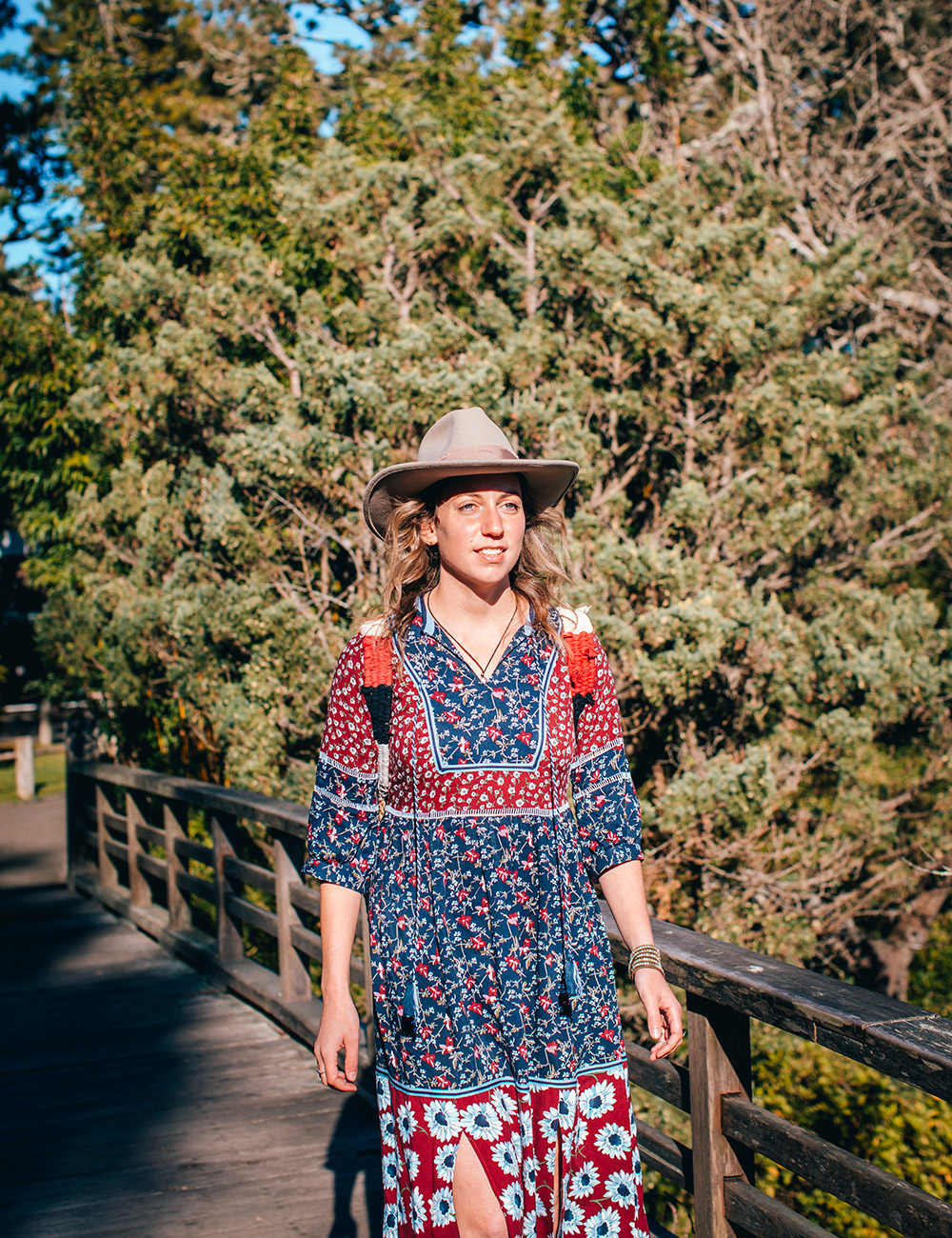
Sounds wonderful. So how has it healed you? How has this practice
been healing for you?
This has been my healing, and continues to be my healing. I spent a decade of my life dealing with Lyme disease and I have this theory that the Lyme was nature’s way of trying to get me to connect. I tried everything but it was when I went into the forest that I was finally totally healed. Many people I have talked to have experienced similar things.
I do believe that I have a calling to do this work. I just finally listened to it. There is an expression- “The harder the journey, the stronger the medicine”. I really resonate with that. I learned that you have to heal yourself before you can heal others. It’s when you take your healing into your own hands that you regain your power. Nature is the greatest teacher. Nature has healing for all of us. So I’m here to show people how to connect, and how to open to receive their own healing from nature.
How do you reconcile what you do with all the technological things you need to do to keep it going?
This is what happens when you’re offering your own medicine. Forest bathing healed me and yet I spend a lot of time in front of the computer talking about it and writing about it. For example, I have the Forest Bathing Club, and I have an Instagram for it, and I do some marketing for events (although I mostly trust the trees to bring in the right people!)
The way that I manage it is through a very dedicated morning ritual practice that is sacred time in the morning and again at night. I have my own way of getting really connected — it’s a mix of nature qi gong, yoga, meditation and shamanic practice, and then my own heartfelt prayer. And it’s a lot of movement prayer, so I’m moving the energy through from the ground to the cosmos and to my heart, doing some asana, like back-bending, opening my heart, setting intentions, saying different affirmations. Every day, I greet the sun and the four directions, and I give an offering to a tree, and I breathe with the tree, and I sit in my sit spot. It can take a while but I notice that I’m a lot clearer and more productive (and sane!) during the day when I do it.
Do you find it hard to unplug from technology? And what happens when you re-enter the city?
Yes, totally! I feel like I lose my phone every few months just so that I can remember what it’s like to be present. I know how distracting technology can be and that’s why it’s important to have tools and a practice to disconnect. As much as I sometimes wish I could live in the forest, I know a lot of my dharma is about bringing nature to cities so it’s really important to learn how to integrate the lessons from the forest into urban life.
Nature is everywhere. It’s not some place “out there.” Whenever you take a sip of water or pet a dog, you are connecting to nature. It’s all about what you pay attention to. If I notice myself getting stressed, I will look for the city trees and the weeds growing through the cracks in the sidewalk. I will look up at the sky or take a big breath of air!
If you have a square foot of Earth, you can take off your shoes, and put your feet into the earth. Just this alone will reduce chronic pain and inflammation. You can even have a little plant on your desk or a flower and even looking at pictures of nature helps. I like to keep collected shells and rocks on little altars to remind me of the interconnectedness of all things. You might hold on to a sacred nature object from a forest bath and keep it with you to remind you of a time when you were in a calm and expansive state.
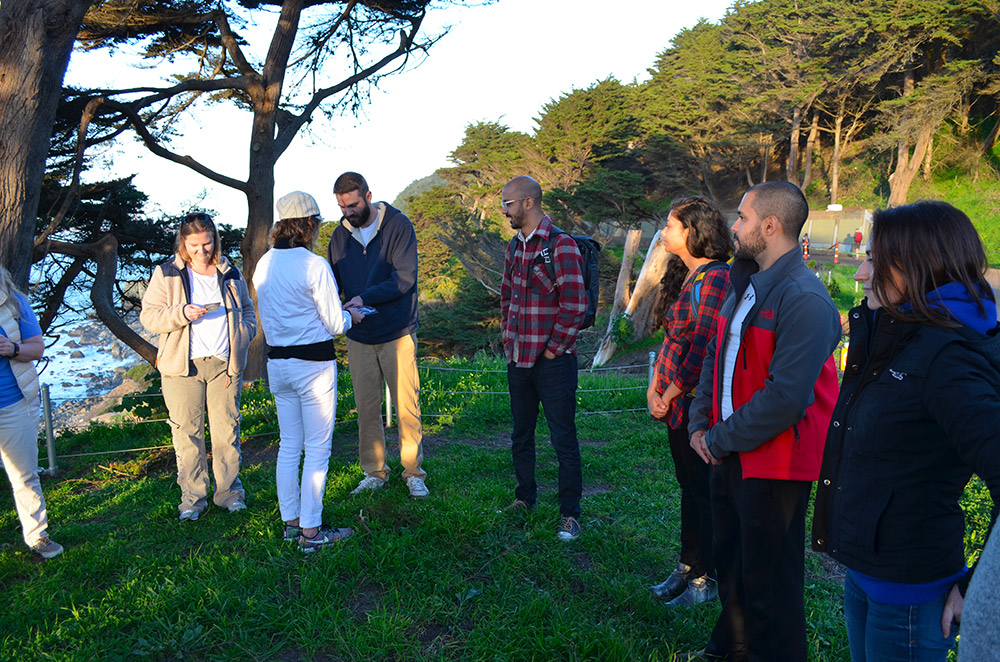
You have just written a book called ‘The Healing Magic of Forest Bathing’. How did that come into being? When does it come out?
When I started the Forest Bathing Club, a journalist happened to come to the first one I ever led, and wrote an article about it. The article was good but I had just finished a Master’s Thesis on the topic so there was a lot more I wanted to share. And so I wrote an article about it, and it caught the eye of a publisher who got excited about the idea of forest bathing, saw that I had press, and approached me to write the book. She saw me as a leader in this emergent area, which was really exciting.
I’ve been a writer my whole life, I’ve always dreamed of writing a book, but I was stymied as to how to make this happen. And that’s really been the story of since I stepped into the forest, as I call it. Opportunities occur where I think, “I don’t know how to make this happen.” But then it’s just all happening and I’m mostly a vessel and a witness.
I truly, truly believe that I’m speaking for the trees, for the forest, and they have messages to share with us right now. And those of us who are open channels are being called to help the trees work their magic.
So with the book, I just knew what it had to be. In many ways, it was the hardest and the easiest thing I’ve ever done. I gave it so much space, and so much heart, and time, and dedication.
When you’re in the writing processes, everything that happens is informing what you’re writing. You meet someone and they recommend a book, and it’s the one thing you need. It’s just a beautiful way to move through the world. I feel like I’m in deep collaboration with the universe when I’m writing.
What do you see happening for you in the next 3 years? How would you like to grow this passion?
I’ve been experimenting a lot with living in flow right now, but to be in flow requires both discipline and surrender. I think it’s like getting in the river, and then just trusting that the river is taking you there. When you’re in flow, it’s most important to have that clear vision. Otherwise, I think you can kind of start to get overwhelmed by it. But my greatest vision is to be a stand for this nature-connected way of living. And by nature-connected, I mean connecting to your true nature. So listening to your truth, and living in a way that is healing for yourself, and for your communities, and the planet.
I see that manifesting for myself in more books, workshops, a nature connection accelerator, and a seed fund for creatives and entrepreneurs who are doing earth-aligned work in a good way.
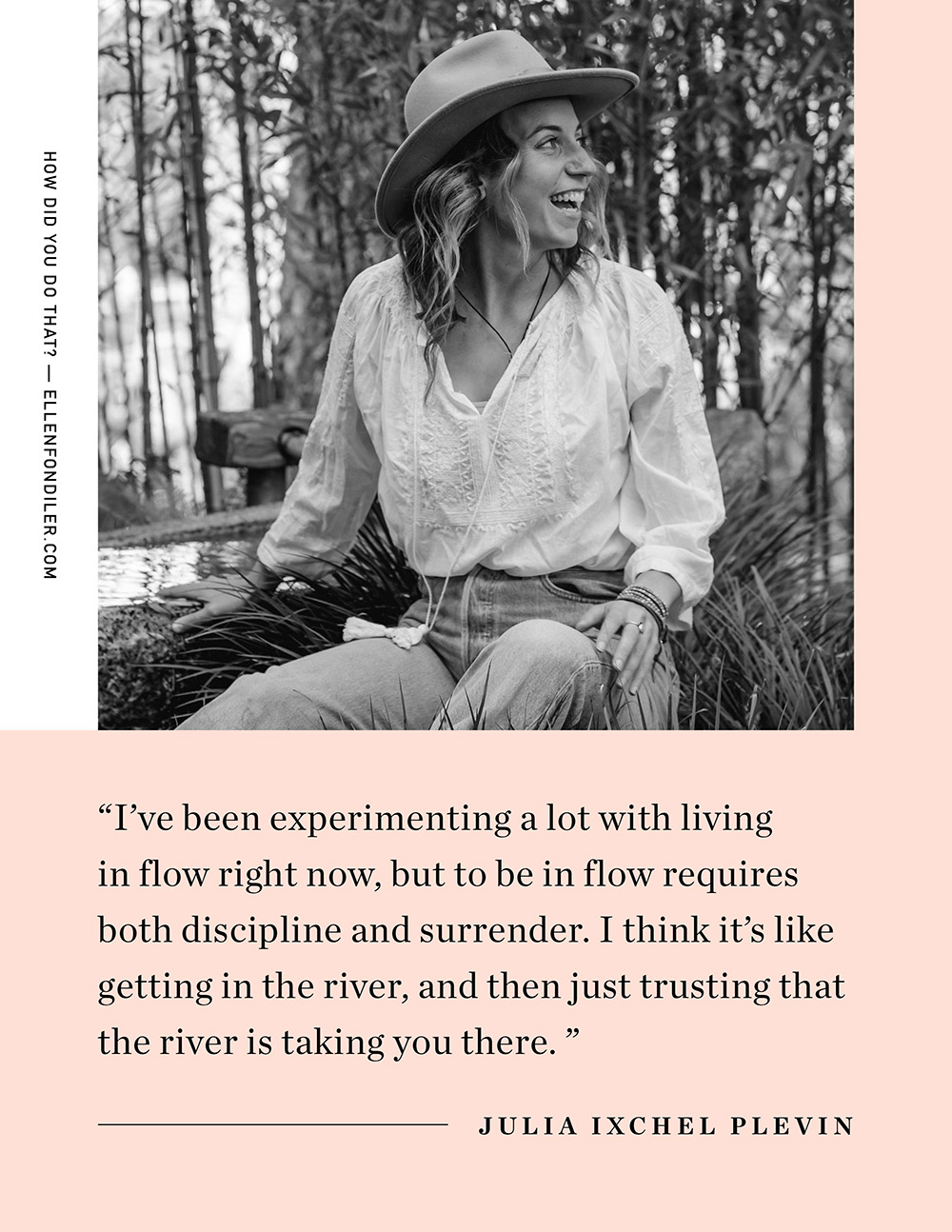
Last question. If someone wants to create more of a practice of being in nature- what are 3 things you would tell him or her to do?
1. First thing I would tell them to do is to leave their phone at home, or at least bring it with them on airplane mode or off, and go out to nature, and just follow their heart. Let their heart lead them to where they want to go, and just kind of wander.
2. Second is to have some kind of daily nature connection ritual. I have lots of examples for that, but I also think it’s something that you can just create on your own. With any element, with a rock, with water, with fire. Over time you will start to build a relationship and that will unfold in a mysteriously perfect way.
3. And third, I would say, have a sacred spot. Just a place where you sit every day, or as often as possible, 15 to 20 minutes, and just be without any agenda.
ONE MORE THING…
Do you have “one more quick question” that you’d like to ask Julia? Email me and tell me what you want to know! I might choose your question for my ONE MORE THING… Podcast (Coming soon!!!)
YOUR #1 CAREER GOAL: ACHIEVED
Do you need some encouragement to help you achieve a big, daunting career goal? Would you like to have a career coach/strategist in your corner—feeding you ideas that you’d never considered before, helping you figure out who to contact, and what to say, and checking in to make sure you don’t procrastinate? If so… click here to find out how we can work together. I’d love to coach you!
![]()
